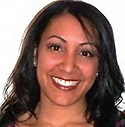by Alexis S. Terry
Director of Diversity and Inclusion
ASAE
Pick up any any book on diversity or attend a training program and chances are good that you will receive the following advice: Learn to assess individual lenses and biases, understand EEO law and organizational change theory, set measurable targets for recruitment and retention, develop a strategic plan that connects diversity goals to the organization’s bottom line, seek board and senior leadership buy-in and commitment for plans, set up affinity groups, yadda yadda.
“Soon the stack of doing diversity grows so tall it can be tough to see the things you should really be focused on.”
Ever find yourself working on more with less clarity about why? I try not to let my training in diversity interfere with my hard knocks education about diversity practices that sometimes work and don’t work in nonprofit organizations. It’s not easy.
It’s easier to say yes. Yes to recycled diversity practices labeled as “best” practices, yes to another program, yes to a small but vocal group of rabble rousers, yes to enthusiasm over usefulness. Soon the stack of doing diversity grows so tall it can be tough to see the things you should really be focused on.
With roots in Washington, D.C., and a workplace located near the Smithsonian museums, I find myself seeing more and more similarities between art work in museums and diversity work in nonprofits.
A great museum is not made by putting all the art into one room. That’s a stockroom. Similarly, not everything we know, want, or can do in diversity belongs in our organization. What makes an effective museum curator and diversity practitioner is the ability to stick to what’s truly essential. Someone says no. There’s an editing process and constant scanning of stuff to remove, simplify, and pare down until we are left with only the most important stuff. As a result of embracing constraint, our stakeholders are clear about what’s important to our organization.
Try it out. Here are three simple but important questions to use when applying a curator’s lens to your work:
Why are you recommending or working on ________? Take a look at your key diversity projects and priorities. Describe the value, not just the vision, of this recommendation or work.
What organizational problem are you solving? Are you solving a real or an imaginary problem? Was something not possible before that should be possible now?
Are you contributing something useful or just making a contribution? Is what your working on really going to change anything? If the answer is no, then why add it? If you had to launch your idea in two weeks, what would you cut out? Funny how a question that imposes a constraint can create clarity. Constraints can be advantages in disguise.
This article has been sponsored by:
ASAE

Alexis S. Terry
Director of Diversity and Inclusion
ASAE
Alexis Terry is director of diversity and inclusion at ASAE: The Center for Association Management in Washington, D.C. ASAE is a membership organization that serves 22,000 association executives. To read more about ASAE and its D+I Strategy, visit www.asaecenter.org.






